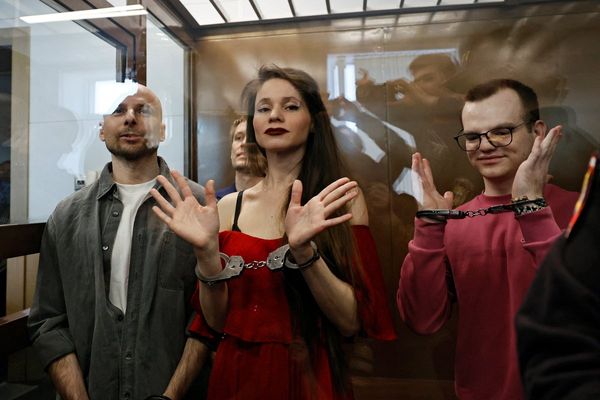
The second-highest mountain on New Zealand’s North Island and its surrounding peaks have been granted legal personhood, becoming the country’s third natural feature to gain the same rights, duties and protections as individuals.
Taranaki Mounga* (Taranaki Mountain) is one of the most symmetrical volcanic cones in the world, and looms impressively over the flat Taranaki plains on the North Island’s west coast. It is believed to be the country’s most climbed mountain and has become a popular tourist destination.
The mountain region is of considerable cultural significance to Taranaki Māori and its designation of legal personhood is a long-awaited acknowledgment of their relationship to it, including that it is considered an ancestor.
After a promise made in 2017, parliament unanimously voted in favour of a law on Thursday that would formally confer Taranaki, its companion peaks and surrounding environment the status of a legal person – to be named Te Kāhui Tupua. The area’s interests will be represented by a collection of appointees from both iwi (tribes) and the crown.
It is also the first time a New Zealand geographic feature will be solely referred to officially by its Māori name, laying to rest its former colonial name, Mount Egmont. The surrounding peaks and natural features will similarly revert to their original Māori names.
Hundreds of Taranaki iwi members travelled to the capital to witness the final reading of the bill, filling parliament’s public gallery and erupting into waiata (song) on the bill’s passing.
Chief negotiator for Taranaki Mounga, Jamie Tuuta, told the Guardian there were mixed feelings among the crowd.
“After generations of hope being discarded and effort from those who are no longer with us … it is a sad time, but it is also a day that we can come together as iwi of Taranaki to celebrate because it is one of the most significant steps in our history – not only for our mounga, but for the people of Taranaki, the region, and the nation.”
The law change marks the final step of a 2016 settlement that saw Taranaki iwi secure reparations over the crown’s breach of its duties to Māori under the Treaty of Waitangi, New Zealand’s founding document signed in 1840 by Māori chiefs and the British crown.
That treaty settlement included financial redress and an apology from the crown over its “unconscionable actions” during the 19th-century Taranaki wars and the indiscriminate confiscation of 1.2m acres of Taranaki land, including the mountain. It acknowledged the confiscations had a devastating effect on Taranaki iwi, who were displaced and deprived of access to sites of ancestral significance, traditional sources of food and resources.
Taranaki becomes the third natural feature in New Zealand to be granted legal personhood, following Te Urewera in 2014 and the Whanganui River in 2017. That designation means the geographic features gain the legal status of a person, ensuring they are treated with respect and protection.
“When we think about the concept of personhood, what we are doing is putting in place a very Māori Indigenous concept into western law,” Tuuta said, adding that it serves as a starting point to shift they way in which significant natural features are treated.
“When we view them as being ancestors … what we ultimately look to do is to see behaviour change.”
Guidelines will be set for how visitors should treat Taranaki and its region, Tuuta said, but he hoped people would learn to respect the mountains and self-regulate their activities. “The success of these arrangements rest not only with iwi and the government, but with the wider nation.”
‘A new beginning’
In a rare show of cross-party consensus, the bill passed unopposed late on Thursday afternoon, with representatives of each party acknowledging the egregious harms wrought by the crown on Taranaki, the importance of reinstating the mountain’s name to Māori, and the significance of conferring personhood.
The minister for treaty negotiations, Paul Goldsmith, said it was a historic day that marked a new beginning in the relationship between the crown and Taranaki iwi.
“This is a special day and an opportunity to right the wrongs … going back 250 years – to the renaming of the mountain and the many, many events in between.”
Goldsmith thanked iwi for the fortitude and patience they showed through the long negotiation period and paid tribute to the ancestors of Taranaki for grievances they suffered.
The co-leader of Te Pāti Māori (the Māori party), Debbie Ngarewa-Packer, who hails from Taranaki, described the theft of the mountain as one of the greatest injustices of colonisation.
“Today, Taranaki is freed from the shackles … of injustice, ignorance and hate. Today, we also liberate with our aroha [love].”
Despite the law not returning the land to Indigenous ownership, it was an important acknowledgment of its significance to Taranaki Māori, Ngarewa-Packer said.
“Today we affirm what we have always known – our [mountain] is, and never was, a crown asset – it is our [ancestor], the living, breathing embodiment of our identity … as Taranaki.”
*Mounga is the regional spelling for the more widely used “maunga”.
• The headline, subheading and main text of this article were amended on 30 January 2025. Taranaki Mounga is the second-highest mountain on New Zealand’s North Island, not in the whole of New Zealand as an earlier version said.







